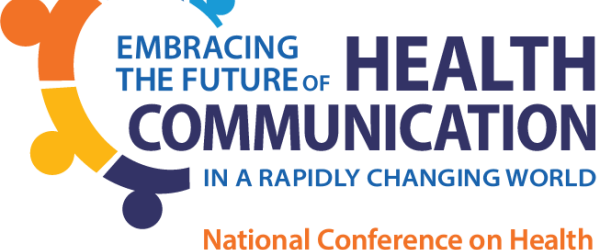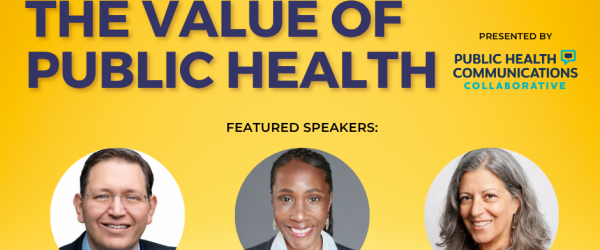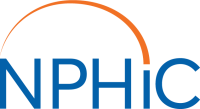Sharing Knowledge
Expertise
Resources
Making Public Health Public
Premier Network of
Public Health Communicators
Increasing the Dissemination of
Accurate Information
LATEST NEWS HIGHLIGHTS

There’s Still Time to Register for NCHCMM 2025 – Don’t Miss Out
Register by THIS Friday, July 18 to join public health communicators from across the country at the 2025 National Conference on Health Communication, Marketing & Media (NCHCMM), happening July 28–30 in Atlanta, GA. Whether attending for one day or all three, participants will gain access to keynotes from Dr. Garth Graham (YouTube Health) and actor/advocate Dyllón Burnside, hands-on workshops, career coaching, networking, and more.
A special career workshop, Pivot with Purpose, offers timely guidance but requires pre-registration and has limited space. With new one-day passes available, NCHCMM is more accessible than ever. Learn more and register at NCHCMM.org.

Measles Surge Spurs Call for Public Health Emergency Declaration
Measles cases in the U.S. have reached a record high in 2025, with 1,288 confirmed infections and three deaths—the first in a decade. The majority of cases stem from a regional outbreak in the Southwest.
Senator Chuck Schumer has urged the Health Secretary to declare a public health emergency to mobilize federal resources and enhance response efforts. Such a declaration could accelerate access to testing and treatments. Public health experts emphasize that timely federal action and sustained funding are critical to controlling measles’ rapid resurgence and preventing wider spread to other communities nationwide. Read the full article from NY Times here.

Nicotine Poisonings Soar in Babies and Toddlers
A new study in Pediatrics highlights a sharp 763% rise in nicotine poisonings among children under 6, driven primarily by the growing popularity of nicotine pouches like Zyn. From 2010 to 2023, U.S. poison centers recorded over 134,000 cases—most involving toddlers and nearly all occurring at home.
While most cases were minor, two toddlers died after ingesting liquid nicotine used in vapes. These findings underscore the urgent need for improved public health messaging around the risks of “tobacco-free” nicotine products, safe storage, and youth access. Public health communicators play a vital role in preventing these entirely avoidable poisonings through education and awareness. Read the full story from NBC here.
FEATURED TOPICS
Get a First Look at NCHCMM 2025 Breakout Sessions
Written on

The 2025 National Conference on Health Communication, Marketing, and Media (NCHCMM) is happening July 28–30 in Atlanta, and we’re excited to share a preview of this year’s breakout sessions.
Highlights include sessions on AI in public health, youth-driven campaigns, mental health messaging, and building trust and transparency through community engagement. Attendees can also explore sessions covering global health, CRM-based campaigns, cancer and maternal health, and more. Haven’t registered yet? Register at www.NCHCMM.org to join the conversation shaping the future of public health communication.
ChatGPT Use Linked to Cognitive Decline: MIT Research
Written on

A recent MIT Media Lab study raises concerns about the long-term cognitive effects of relying on ChatGPT. Researchers found that participants who regularly used the tool to write SAT-style essays showed the lowest brain engagement and underperformed linguistically and behaviorally compared to peers who used Google or no tools at all.
EEG scans revealed diminished neural activity in the ChatGPT group, which increasingly shifted from using the tool for support to copying content outright. The “brain-only” group showed the strongest cognitive function. These findings highlight the need for caution, particularly for younger users, as public health and education sectors grapple with AI’s growing role. Read the full article from The Hill here.
HHS Plans ‘Bold, Edgy’ Campaign on Ultra-Processed Foods
Written on

The U.S. Department of Health and Human Services (HHS) is launching a bold national campaign, “Take Back Your Health,” focused on the strong links between ultra-processed foods and increased diabetes risk. With an estimated $10-20 million budget for its first phase, the campaign aims to deliver daring, viral messaging that motivates behavior change among Americans.
It also seeks to popularize health technologies like wearables, framing them as modern, “cool” tools for tracking diet and managing health. This initiative highlights a strategic push to combine public health messaging with cutting-edge technology to address chronic disease prevention nationwide. Read more from STAT News here.
Don’t Miss the Closing Plenary at NCHCMM!
Written on

Be sure to join us on Wednesday, July 30, for the powerful closing plenary at the National Conference for Health Communication, Marketing, and Media (NCHCMM) in Atlanta: Communicating the Value of Public Health. Sponsored by Deloitte and organized by PHCC and NPHIC, this dynamic session brings together leading voices—Brian Castrucci, Katherine Reed, and Ashani Johnson-Turbes—for a conversation on how storytelling, media strategy, and innovation can reshape public understanding of public health. Walk away inspired to elevate your messaging and impact.
This plenary is a must-attend for public health professionals seeking practical strategies to cut through misinformation, engage diverse audiences, and demonstrate the critical role of public health in improving lives. Register today to be part of this energizing conclusion to NCHCMM!
Latest Blog Posts
Podcast
"Public Health Speaks"
A bi-monthly podcast series about public health issues to educate, inform and assist our members, partners and affiliate organizations in understanding and overcoming urgent communication challenges
From Our Partners
CDC Online Newsroom
- CDC warns of Salmonella outbreak linked to frozen sprouted beans
- CDC's Advisory Committee on Immunization Concludes Meeting with Joint Statement
- CDC's Advisory Committee on Immunization Practices to Meet June 25-26
- CDC warns of Listeria outbreak linked to recalled chicken fettuccine alfredo meals
- CDC warns of Salmonella outbreak linked to pistachio cream
- CDC warns of Salmonella outbreak linked to eggs
- CDC warns of Salmonella outbreak linked to whole cucumbers
- Statement from CDC's National Center for Injury Prevention and Control on Provisional 2024 Overdose Death Data
CDC Latest COVID-19 Science Update
CDC FluView Weekly Summary
CDC Morbidity and Mortality Weekly Report
- Notes from the Field: Early-Season Human Plague Transmitted from an Infected Cat - Oregon, January 2024
- Evaluation of a Combined Text Messaging and Online Survey Protocol for Giardiasis Case Investigation - Colorado, September 2023-May 2024
- Erratum: Vol. 74, No. 18
- Erratum: Vol. 73, No. 41
- Candida auris Containment Responses in Health Care Facilities that Provide Hemodialysis Services - New Jersey, North Carolina, South Carolina, and Tennessee, 2020-2023
GET INVOLVED! NPHIC SOCIAL MEDIA
NPHIC YouTube Channel
-
Drugs and your body have a toxic relationship (:6, widescreen)
18 July 2025
-
Drugs and mental health don’t mix (:10, widescreen)
18 July 2025
-
Drugs and mental health don’t mix (:15, widescreen)
18 July 2025
-
Drugs and your body have a toxic relationship (:10, widescreen)
18 July 2025
-
Drugs and your body have a toxic relationship (:15, widescreen)
18 July 2025
-
Drugs and mental health don’t mix (:30, widescreen)
18 July 2025
-
Drugs and your body have a toxic relationship (:30, widescreen)
18 July 2025
-
¿Qué es el cáncer colorrectal?
18 July 2025



















